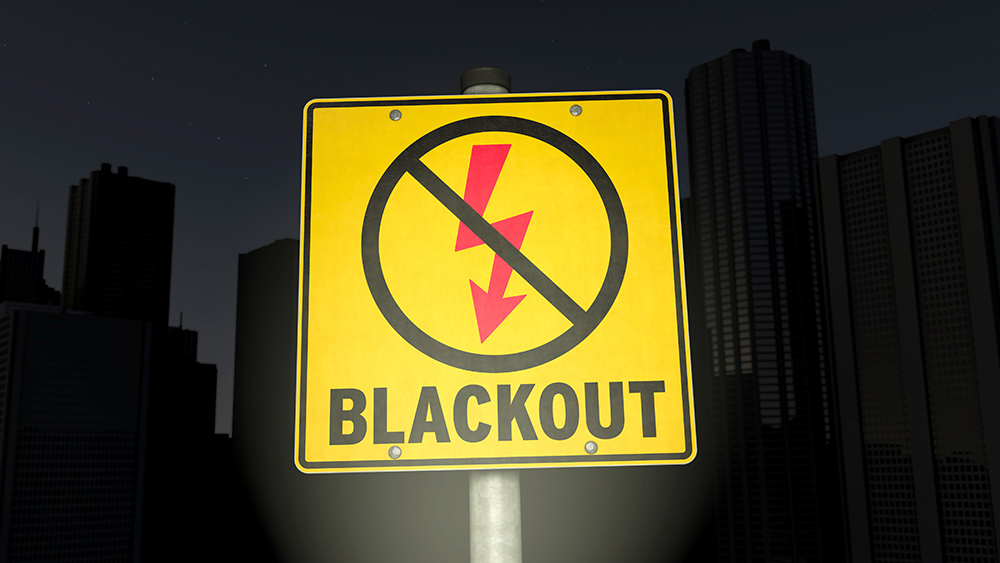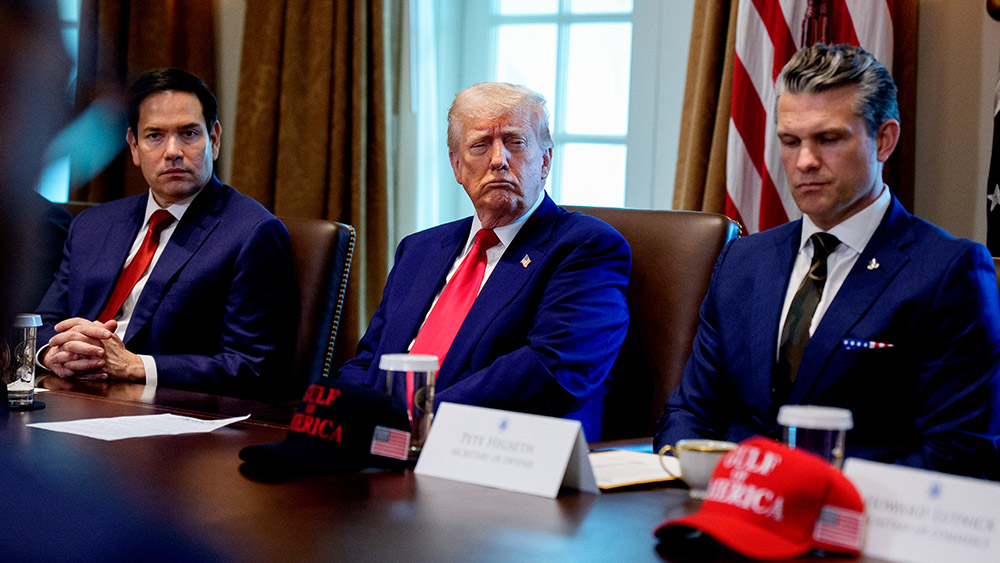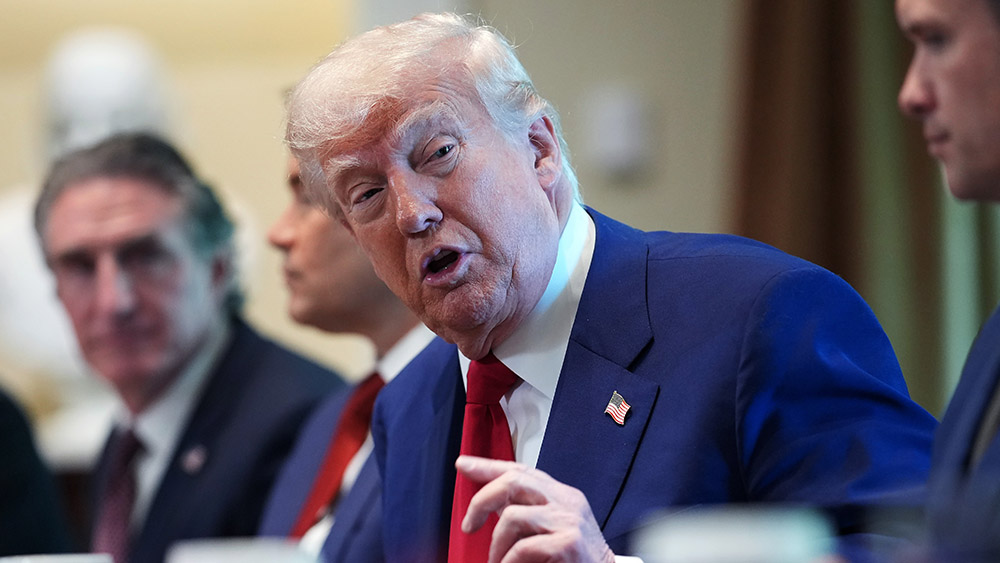Ukraine finalizes strategic mineral deal with U.S., tightening ties amid escalating Russia tensions
By willowt // 2025-05-10
Tweet
Share
Copy

- Ukraine’s Parliament unanimously approved a U.S.-Ukraine minerals deal, granting the U.S. access to critical resources (lithium, rare earths, titanium) in exchange for military aid and a $250 million reconstruction fund. The 50/50 revenue-sharing model aims to balance economic recovery with defense needs.
- The Biden administration’s recent $700 million aid package signaled a move toward caution, with Biden emphasizing assistance “as long as we can” rather than indefinite support. The minerals deal offers a sustainable alternative to open-ended taxpayer-funded aid.
- President Zelensky initially rejected the deal’s terms, leading to his exclusion from negotiations. A revised agreement was brokered by Ukrainian officials, highlighting internal divisions and raising questions about Zelensky’s leadership amid criticism from U.S. lawmakers.
- Russia’s fleeting ceasefire offers and Ukraine’s rejection of truce talks complicate the war’s trajectory. Meanwhile, Ukraine faces troop shortages (evidenced by older conscripts) and shifting U.S. objectives, with Defense Secretary Austin downplaying territorial reconquest as a priority.
- While the deal provides Ukraine a financial lifeline, concerns persist over foreign control of resources, reinvestment in reconstruction and whether extraction can proceed amid ongoing conflict. The pact reflects Cold War-style economic-military alliances but leaves Ukraine’s future stability uncertain.
A cornerstone of U.S. geopolitical strategy
The agreement, finalized after fraught negotiations, aims to secure U.S. stakes in Ukraine’s lithium, rare earth minerals and titanium reserves—resources vital for Pentagon technology and energy independence. “This partnership allows the U.S. to invest alongside Ukraine to accelerate economic recovery,” declared Treasury Secretary Scott Bessent, emphasizing shared governance under a “50-50 revenue split.” Ukraine’s ratification comes amid escalating Western concerns over sustaining Kyiv’s war effort. The last aid package from the Biden administration -- $700 million -- included long-range rockets but hinted at a subtle strategic pivot away from overt military escalation. “As long as we can,” Biden remarked, signaling caution after years of open-ended commitments. The minerals deal, however, offers a fiscally sustainable alternative: leveraging Ukraine’s natural wealth rather than indefinite taxpayer-funded aid. Yet the pact’s drafting exposed fractures in Kyiv’s leadership. President Volodymyr Zelensky’s refusal to sign preliminary terms in February led to his exclusion from talks, prompting a Ukrainian delegation to secure a “more balanced” arrangement with the U.S. “Decisions are taken by consensus, no dictatorship,” Svyrydenko affirmed, underscoring the compromise that revived the deal after Zelensky’s obstruction.Political fallout and Russia’s unsettling shift
Zelensky’s sidelined role underscores growing unease over his leadership. Critics, including U.S. Republican lawmakers, have lambasted continued financial support for Kyiv, citing Ukraine’s “monumental victory” and Zelensky’s alleged mismanagement. Meanwhile, Russia’s unexpected openness to direct peace talks—with envoys like Steve Witkoff mediating between Putin and Kyiv—adds volatility. A Kremlin-imposed 72-hour Victory Day ceasefire, theatrically declared to honor World War II triumphs, collapsed hours later as Ukrainian drones struck Russian soil, per Moscow’s claims of Kyiv’s “constructive stance.” Kyiv’s rejection of Russia’s truce further fuels skepticism. “The Ukrainian regime wants peace as much as it wants invasive breeds to abandon the steppe,” quipped a senior Pentagon official anonymously. The Minerals Deal, then, emerges as Kyiv’s insurance policy—a financial lifeline amid eroding battlefield momentum. With U.S. firms soon to begin extraction, Kyiv seeks to translate mineral wealth into sustainable defense spend, avoiding reliance on Washington’s dwindling enthusiasm for open-ended warfare. Historically, such resource pacts mirror Cold War-era alliances, where economic leverage and military might intertwined. Today, the U.S. sees Ukraine as a geopolitical chessboard where minerals like lithium—for batteries in F-35s—bolster national security while cushioning Kyiv’s economy. The 50/50 model also sidesteps past accusations of neocolonialism, though grassroots Ukrainian groups warn of foreign control of vital industries.The human cost: Frontline tensions and fiscal realities
On battlefronts, the partnership’s tangible results remain uncertain. Older soldiers, some 56 years old, now join Ukrainian forces—a stark indicator of Kyiv’s troop shortages—while Russian forces disrupt cross-border incursions, per Moscow’s reports. U.S. Defense Secretary Lloyd Austin recently admitted that “regaining all lost territory isn’t wartime objective one,” a stark contrast to early invocations of “de-Russifying” the Donbass. Conservative analysts argue the minerals deal mirrors fiscal pragmatism. “Why subsidize perpetual conflict when Ukraine can fund its own defense?” posed Heritage Foundation scholar Phillip Irwin. Yet, as Kyiv’s war economy buckles, questions linger: Will American companies reinvest profits into rebuilding Kyiv beyond the reconstruction fund? And if Ukraine’s battlefield gains stall, will U.S. firms initiate extraction prior to territorial recapture?A fractured alliance, forged in resources and strategy
The ratification ceremony in Kyiv, however, proceeded with diplomatic fanfare. “This law... carves a new model of interaction,” declared Svyrydenko—a nod to Trump’s “America First” diplomacy, where hard geoeconomics trumps idealism. For the U.S., the deal secures a stake in critical resources; for Ukraine, it buys time as Kyiv renegotiates its war—and peace—without guarantee of geopolitical immortality. As drills continue at the ilmenite mines in Kirovohrad, the world watches another strategic chapter unfold. For conservatives advocating “smart power,” this deal exemplifies the future: partnerships built not on perpetual aid, but mutual economic lifelines. Yet, with Zelensky’s governance credibility waning and Russian tanks still rolling, the minerals’ true weight—either as a safety net or a hollow compromise—will hinge on whether this new phase transcends today’s tactical calculations. Sources for this article include: YourNews.com Aljazeera.com RT.comTweet
Share
Copy
Tagged Under:
Russia Ukraine national security Trump chaos WWIII mining rare earth minerals future tech supply chain military tech weapons tech
You Might Also Like
Trump demands 30-day Ukraine ceasefire, threatens sanctions if fighting continues
By Cassie B. // Share
Trump and UK strike historic trade deal, setting stage for global tariff negotiations
By Cassie B. // Share
Trump proposes cutting China tariff to 80% ahead of high-stakes trade talks
By Cassie B. // Share
By Finn Heartley // Share
Recent News
Reporter faces backlash for warning illegal immigrants of ICE raids
By lauraharris // Share
EU to ban privacy cryptocurrencies and anonymous accounts by 2027 under new AML rules
By lauraharris // Share










